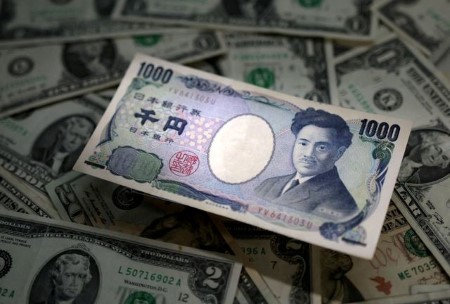




Philippines Trade Update: Exports momentum continues
 DOWNLOAD
DOWNLOAD

Quarterly Economic Growth Release: More BSP cuts to come
 DOWNLOAD
DOWNLOAD

Monthly Economic Update: Fed catches up
 DOWNLOAD
DOWNLOAD


Dollar jumps, yen weakest since 1990 after strong US retail sales

NEW YORK, April 15 – The dollar reached its highest since early November against a basket of currencies on Monday and sent the yen to its lowest level since 1990, after US retail sales increased more than expected in March.
Retail sales rose 0.7% last month and data for February was revised higher to show sales rebounding 0.9% instead 0.6% as previously reported. Economists polled by Reuters had forecast retail sales, which are mostly goods and are not adjusted for inflation, rising 0.3% in March.
The greenback has gained as still sticky inflation and strong growth lead investors to push back expectations on when the Federal Reserve is likely to begin cutting rates. The US central bank is also now expected to make fewer cuts than previously.
“US data just keeps coming better and better than expected,” said Brad Bechtel, global head of FX at Jefferies in New York.
Traders are now pricing in fewer than two 25 basis points cuts by year-end, after previously expecting three.
New York Fed President John Williams said on Monday that Fed policy was in a good place and remained restrictive, adding that his own view was that interest rate cuts would likely begin this year.
The Japanese yen in particular has suffered from US dollar strength and the large interest rate differential between the two countries.
Japanese monetary officials have ramped up warnings that they may intervene to shore up the currency. Finance Minister Shunichi Suzuki said on Monday he was watching currency moves closely, repeating that Tokyo is “fully prepared” to act.
Bechtel sees any potential intervention as more likely if the yen is underperforming, rather than during episodes of broad-based dollar strength.
“I think we still need a big day of yen really underperforming the market by 1% or more,” he said, adding that Japanese officials might also step in at a key level such as 155.
The dollar was last up 0.59% against the Japanese currency at 154.19, after getting as high as 154.45.
The dollar index reached 106.23, the highest since Nov. 2, and was last up 0.24% at 106.20.
Investors are also focused on escalating tensions in the Middle East, which are seen as increasing demand for the safe haven US dollar.
Israel faced growing pressure from allies on Monday to show restraint and avoid an escalation of conflict in the Middle East as it considered how to respond to Iran’s weekend missile and drone attack.
The euro fell as low as USD 1.0622, the weakest since Nov. 3, and was last down 0.18% at USD 1.0623.
The single currency recorded its biggest weekly percentage drop since late September 2022 last week as the European Central Bank left the door open to a rate cut in June.
The Australian dollar also dropped to USD 0.6441, the lowest since Nov. 14.
In cryptocurrencies, Bitcoin fell 6.24% to USD 62,950.00. It reached USD 61,323 on Saturday, the lowest since March 20.
(Reporting By Karen Brettell; Editing by Alex Richardson and Sharon Singleton)
This article originally appeared on reuters.com





 By Reuters
By Reuters